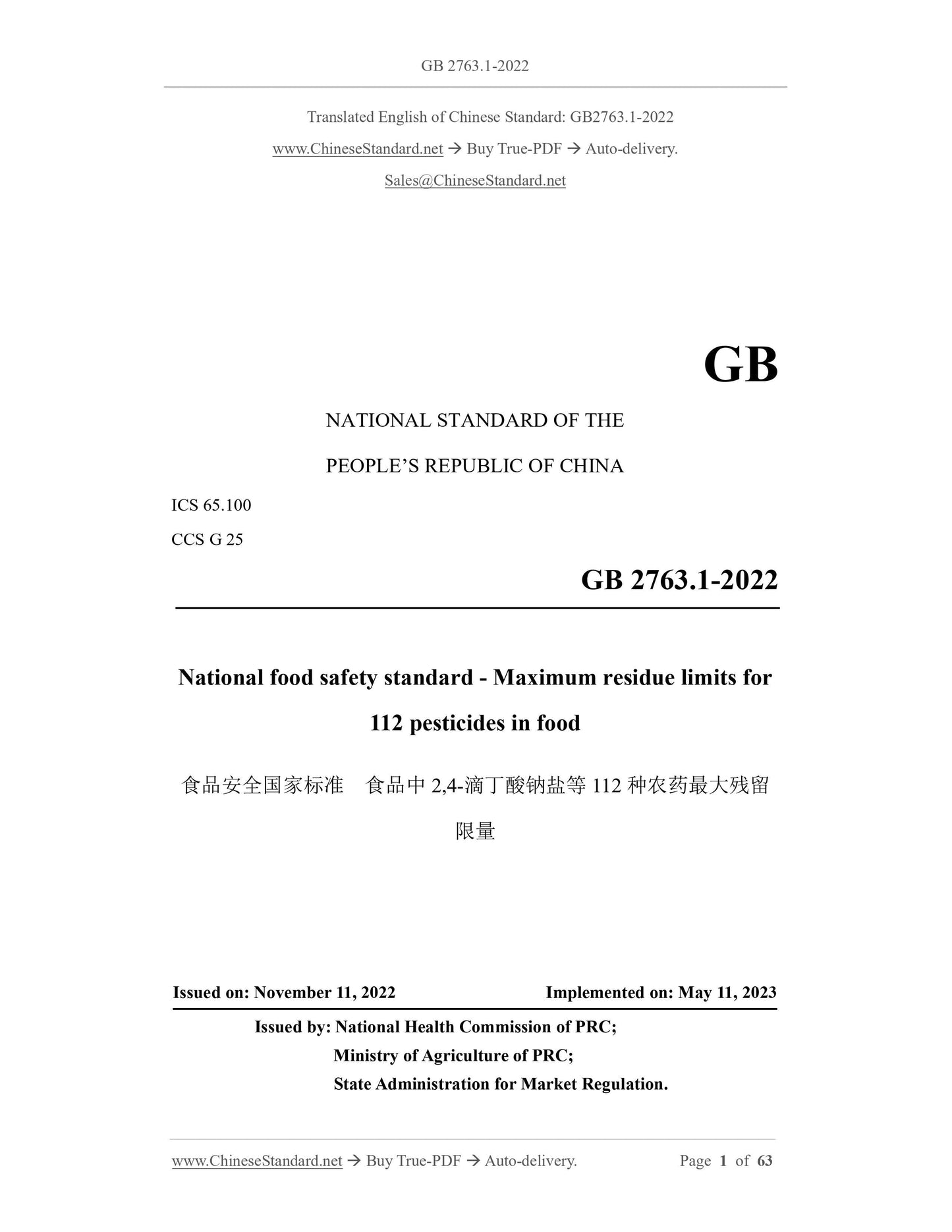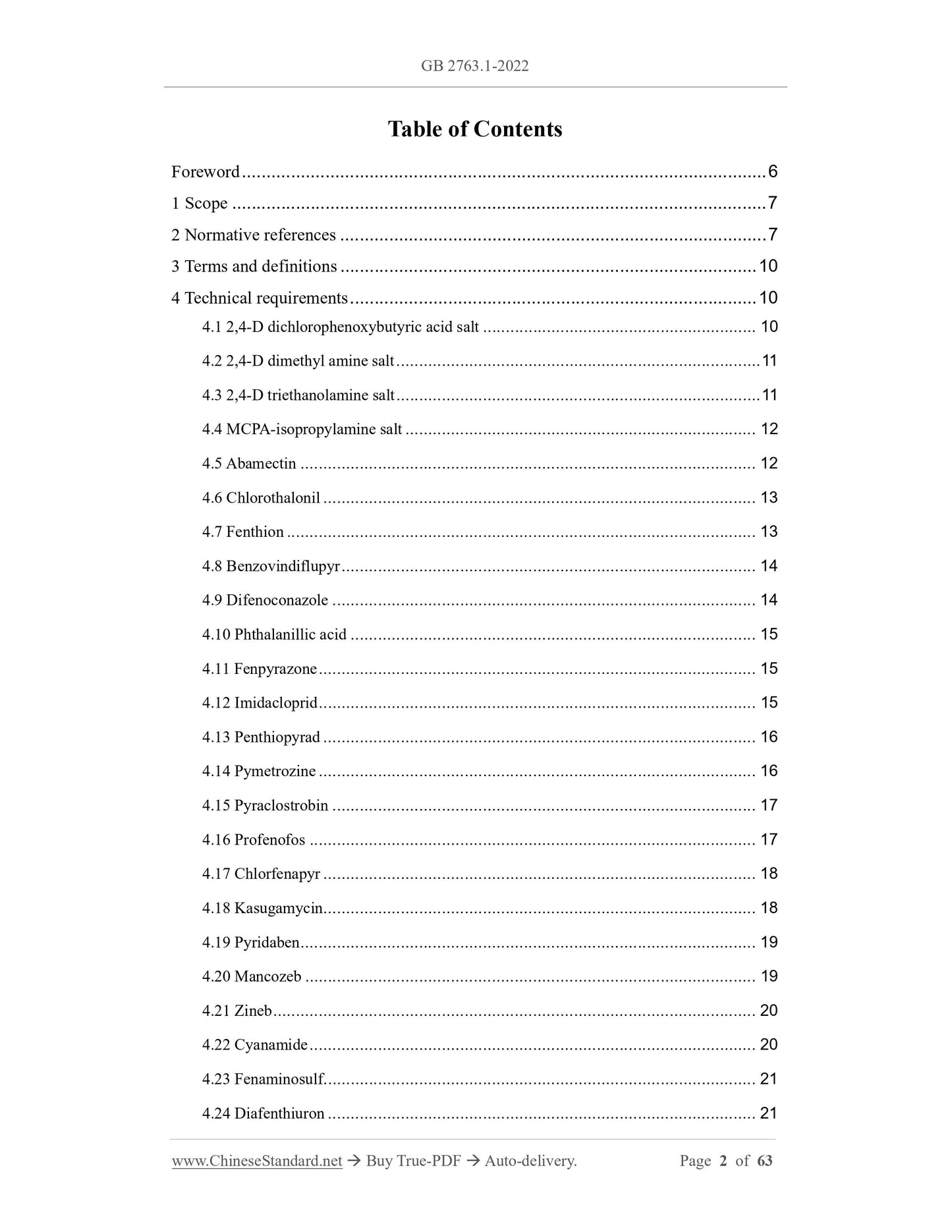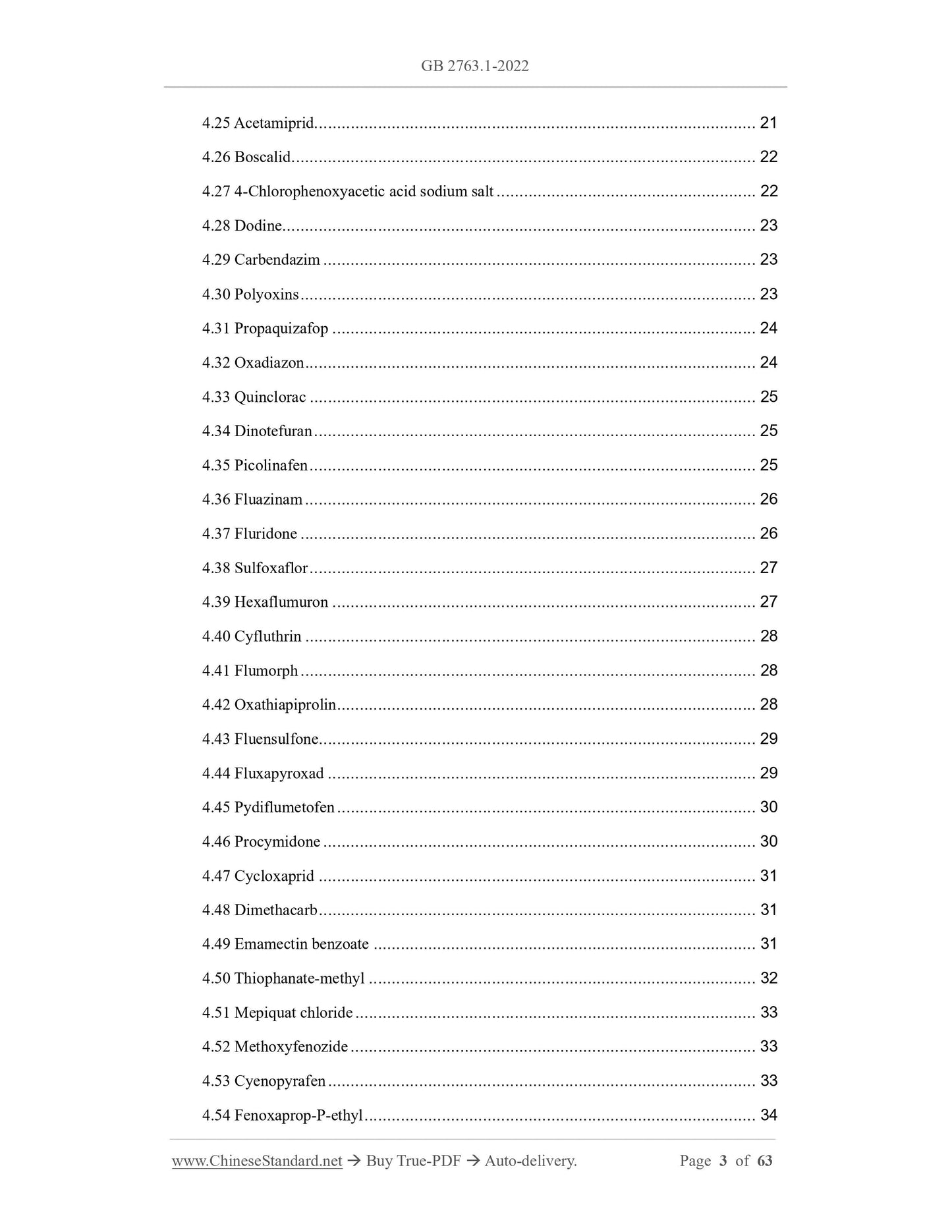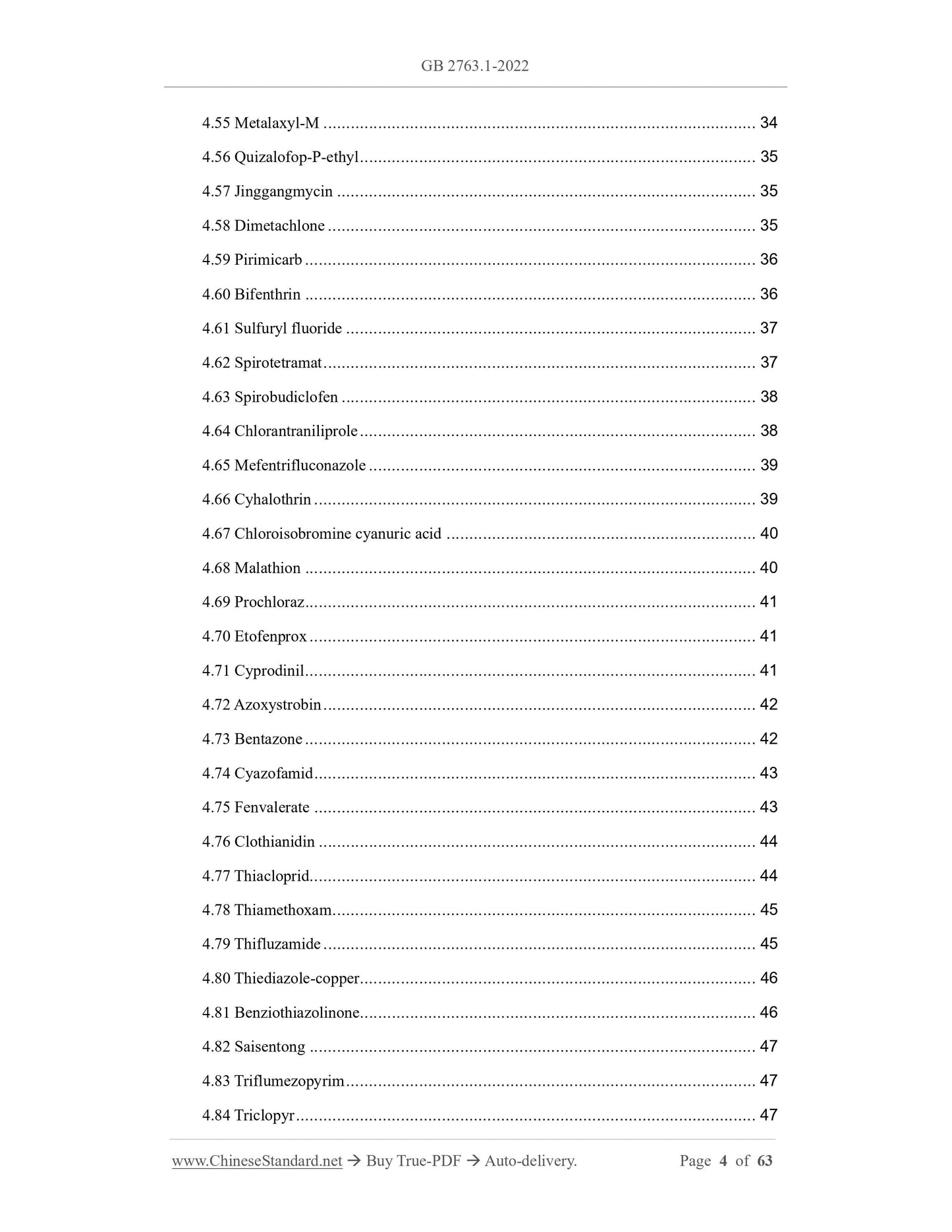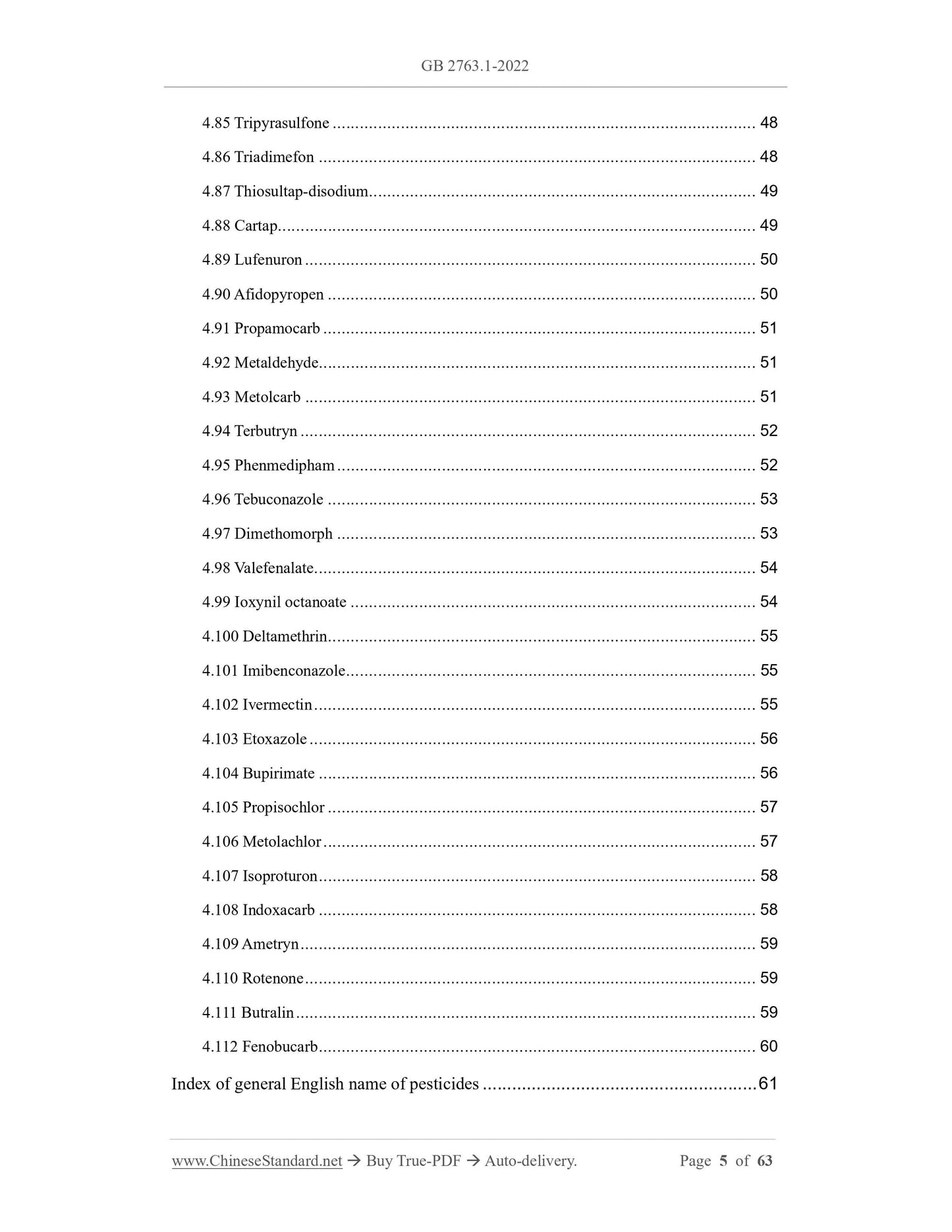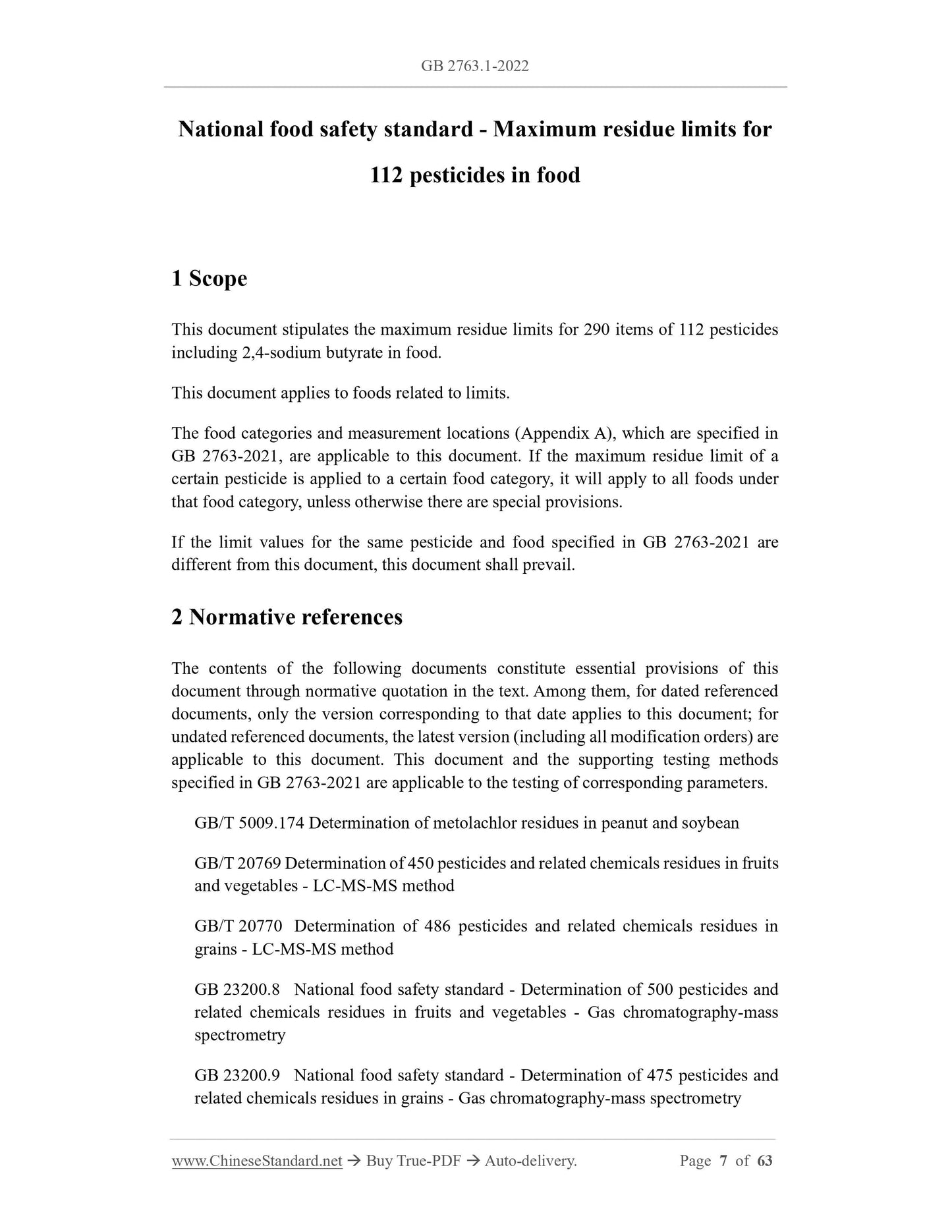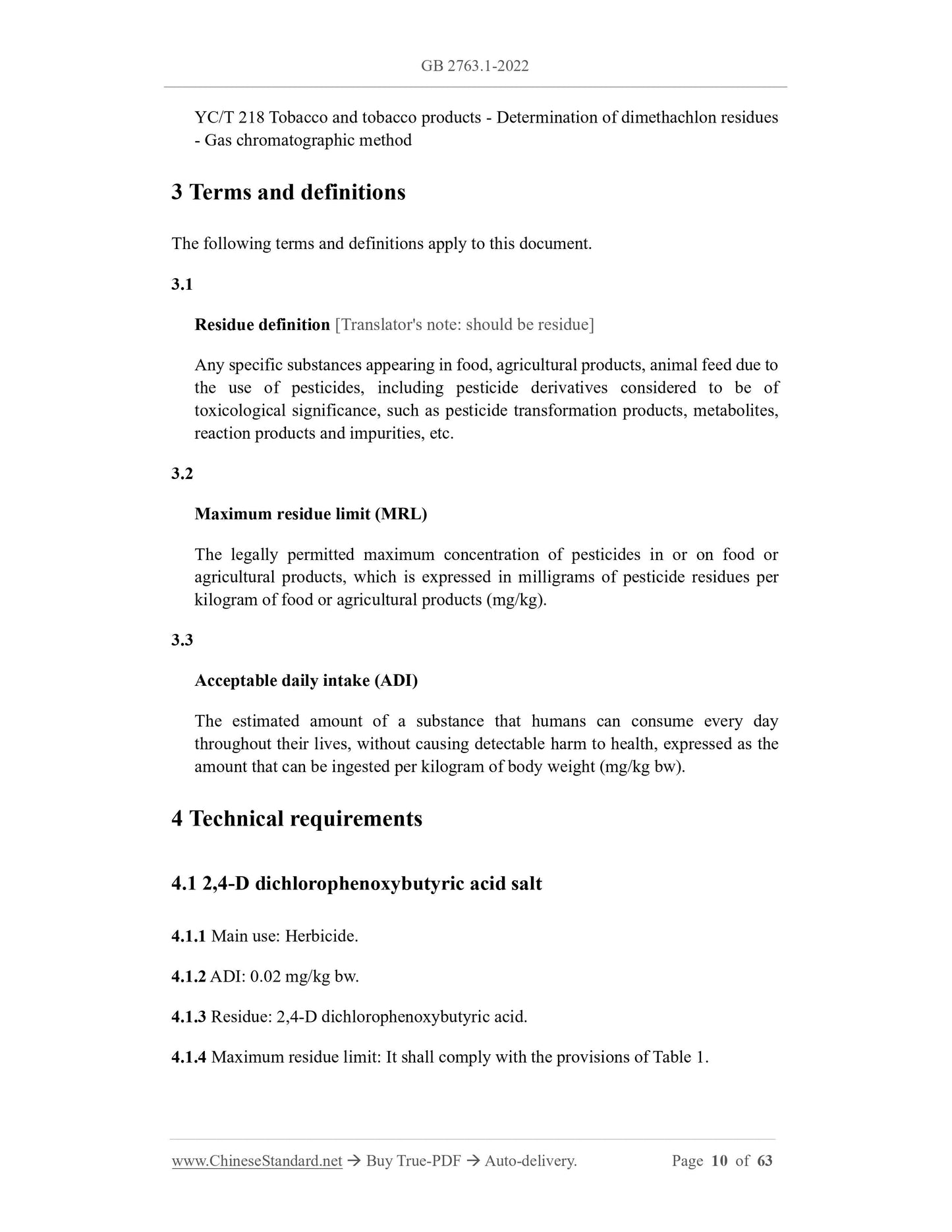1
/
of
7
www.ChineseStandard.us -- Field Test Asia Pte. Ltd.
GB 2763.1-2022 English PDF
GB 2763.1-2022 English PDF
Regular price
$890.00
Regular price
Sale price
$890.00
Unit price
/
per
Shipping calculated at checkout.
Couldn't load pickup availability
GB 2763.1-2022: National food safety standard - Maximum residue limits for 112 pesticides in food
Delivery: 9 seconds. Download (and Email) true-PDF + Invoice.Get Quotation: Click GB 2763.1-2022 (Self-service in 1-minute)
Newer / historical versions: GB 2763.1-2022
Preview True-PDF
Scope
This document stipulates the maximum residue limits for 290 items of 112 pesticidesincluding 2,4-sodium butyrate in food.
This document applies to foods related to limits.
The food categories and measurement locations (Appendix A), which are specified in
GB 2763-2021, are applicable to this document. If the maximum residue limit of a
certain pesticide is applied to a certain food category, it will apply to all foods under
that food category, unless otherwise there are special provisions.
If the limit values for the same pesticide and food specified in GB 2763-2021 are
different from this document, this document shall prevail.
Basic Data
| Standard ID | GB 2763.1-2022 (GB2763.1-2022) |
| Description (Translated English) | National food safety standard - Maximum residue limits for 112 pesticides in food |
| Sector / Industry | National Standard |
| Classification of Chinese Standard | G25 |
| Word Count Estimation | 46,422 |
| Date of Issue | 2022-11-11 |
| Date of Implementation | 2023-05-11 |
| Issuing agency(ies) | National Health Commission of the People's Republic of China, State Administration for Market Regulation |
Share
